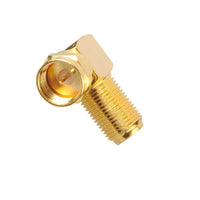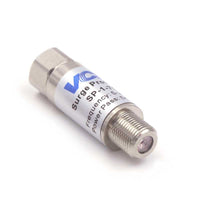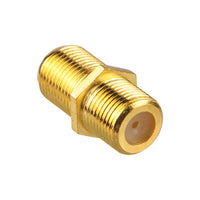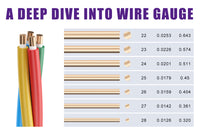Contents
A typical coaxial cable comprises a copper conductor, conductive shielding, dielectric insulation, and a protective jacket. Though they are gradually replaced by optical fibers and twisted pair cables in applications like computer network connections, coaxial cables have been popular in telephone networks, cable TV transmission, and radio antenna connections. These cables are available in various types, and RG6 and RG59 are two common types used in our daily lives. We will further explore the differences between RG59 and RG6 in this article.
What Does RG Mean?
RG stands for Radio Guide, first introduced by the U.S. Military as a general term for coaxial cables carrying radio frequency (RF) signals. Today, “RG-#” is still used to distinguish various cable specifications. Cables with different RG numbers generally feature different cable diameters, materials, characteristic impedance, electrical and mechanical performance, and other characteristic.
RG59, RG6, and RG11 are frequently discussed coaxial cables, and in the subsequent discussion, we will pay attention to comparing RG59 and RG6.
What is RG59 Cable?
RG59 is a coax cable with a 75-ohm impedance. Designed for low-power video and radio frequency signal connections, RG59 gained popularity in the latter part of the 20th century and into the early 2000s, particularly in closed-circuit television (CCTV) and cable television (CATV).
The conductor diameter of RG59 is usually 20 or 22 AWG (American wire gauge). RG59 cables are suitable for transmissions over up to 30 meters (100 feet) distances. However, its relatively poor signal attenuation makes it less adaptable for longer-distance applications or high-frequency signal transmission. As a result, RG59 is gradually replaced by other coaxial cables, such as RG6 and RG11, in broadband Internet and high-definition TV signal applications. However, RG59 still has its place in antennas.
RG59 cables are usually used with F-type connectors. And other connectors like BNC-type are also applied.
What is RG6 Cable?
RG6 cables typically have a characteristic impedance of 75 ohms and a center conductor of 18 AWG. Standard RG6 coaxial cables feature two different layers for shielding, whereas some variants even have more layers. For example, the RG6Q (RG6 quad shield) cable uses four shielding layers to enhance the shielding effect. RG6 cables are generally used in contemporary applications such as cable TV, satellite TV, and the Internet.
With a thicker conductor and shielding, RG6 offers higher signal quality, better high-frequency performance, and lower losses than RG59. RG6 cables are also used with F-type connectors for varied TV coaxial connections. Due to the difference in cable sizes, RG6 coax connectors are naturally larger than those of RG59.
RG59 vs. RG6: What are the Differences?
While RG59 and RG6 cables share a 75-ohm impedance, they differ in cable gauges and shieldings, a factor that significantly influences their adaptation and performance. Let’s delve into a detailed comparison in the following content.
Shielding
The shielding plays a crucial role in keeping the transmission capacity of coaxial cables. On the one hand, conductive shielding can prevent the electric waves of the central conductor from being emitted outward. On the other hand, it can protect signals from noise and external interference.
Though most coaxial cables have at least two shielding layers, conventional RG59 cable only uses high-density copper braid as shielding. The RG6 cable has double layers for shielding, including foil and braid shielding. The foil shield is attached to the dielectric to reduce high-frequency signal leakage, and the braided shield outside helps minimize low-frequency interference. Some RG6 cables even contain three or four shielding layers, which are reliable but more expensive.
Cable Diameter
RG6 cables are usually thicker than RG59 cables because of their construction. Not only does RG6 feature a larger inner conductor diameter and additional foil shielding, but its insulating dielectric layer is also thicker. With an 18 AWG conductor, RG6 provides superior transmission and broader bandwidth compared to RG59, whose conductor is 20 or 22 AWG. While RG6 outperforms in insulation and shielding, RG59 has advantages in installation in terms of being thinner, softer, and more flexible.

Signal Loss
Signal loss is mainly related to cable shielding performance and transmission distance. Generally speaking, enhanced cable shielding contributes to less signal loss, and longer transmission distances exacerbate signal attenuation. Therefore, RG6 typically experiences less signal loss than RG59 over longer distances. RG59 has poorer signal quality with increasing distances, making it more suitable for short or medium-distance applications.
Frequency Range
RG6 can operate at frequencies up to 3 GHz and perform better in high-frequency applications, but RG59 may experience signal attenuation at 2 GHz. However, RG6 cannot work well below 50 megahertz. On the contrary, RG59 is ideal for transmitting signals below 50 MHz. That is why RG59 and RG6 cables are sometimes used together in the same scenes.
Applications
RG59 is active in relatively low bandwidth and low-frequency applications such as closed-circuit television systems and other analog video signal transmission. For analog TV antennas, CCTV, security cameras, VCRs, component videos, video projectors, and other applications, RG59 cables are sufficient to meet the needs and remain favored for their low cost, small wire diameter, and high flexibility. RG59 is sometimes used for short-range broadcast signals and high-quality HD video transmission, but without foil shielding, RG59 cannot be used for high-frequency satellite feeds. In the realm of cable television, RG59 had its heyday in the past, but its dominance was gradually eclipsed by the emergence of RG6 cables.
The RG6 cable is mainly for CATV, HD television, satellite receivers, broadband Internet, radio antennas, etc. It is a high-performance alternative over longer distances in scenarios where RG59 is applicable, except for low-frequency applications below 50 MHz. But RG6 has a higher price and stiffer cable, so it is not used to replace all RG59 cables.
How to Tell RG6 from RG59?
Distinguishing between RG6 and RG59 coaxial cables is relatively straightforward. The specification is generally printed on the jacket of coaxial cables. And you can directly know the type of cable.
When you unfortunately cannot find any valid information on the cable jacket, how do you tell RG59 and RG6 apart? The easy way is to compare their diameters and hardness. The RG6 cable boasts a slightly larger diameter than RG59, while RG59 tends to be more flexible and prone to bending than RG6.
While stripping the two cables, the internal differences between RG6 and RG59 become evident. RG59 cables usually feature a braided copper shield with no foil layer, along with a thinner insulating layer and a smaller center conductor. In contrast, RG6 tends to have braided and foil shielding, a thicker insulation layer, and a larger inner conductor.

How About Other Types of Coaxial Cable?
RG11 cables with 14 AWG conductors are also widely used in long-distance applications. Compared to RG6, RG11 is thicker and has less signal loss, thus capable of handling higher frequencies and long-distance applications exceeding 500 meters. However, it is mainly used in outdoor applications due to its rigidity and lack of flexibility.
Another 75-ohm coaxial cable, RG12, features a 7-strand inner conductor and a more complex shielding layer design than RG6 and RG59. This heavy and rigid cable is specially designed for underground direct burial applications.
Conclusion
RG6 is a favorable choice over RG59 for broader applications. It effectively meets the majority of requirements for residential coaxial cable projects. For projects operating below 50 MHz or antenna usage, RG59 cables remain an alternative.
If you are uncertain which coaxial cables suit your needs, it is advisable to consult the expert. Nonetheless, RG6 cables can often be the optimal choice for common scenarios.
FAQ
Is RG6 better than RG59?
Yes, RG6 functions better for the vast majority of applications. It provides higher frequency, lower signal attenuation, and longer transmission distance. It is suggested to use RG6 for CATV and satellite cable applications.
RG59 or RG6 coaxial cable for TV antenna reception?
The choice of coaxial cable for TV antenna reception significantly impacts reception reliability. While RG59 can offer an experience barely satisfactory, opting for RG6 can give you higher signal quality and more channels.
Can I use RG59 for CCTV or satellite TV?
RG59 is well-suited for CCTV but not suitable for satellite TV applications. For satellite TV installations, it is recommended to use RG6 cables.
For more information on this topic, you can keep up on our blogs. While VCELINK offers general and basic information for our customers and other visitors to the website, it’s not professional advice.






Be the first one to comment.
Leave a comment